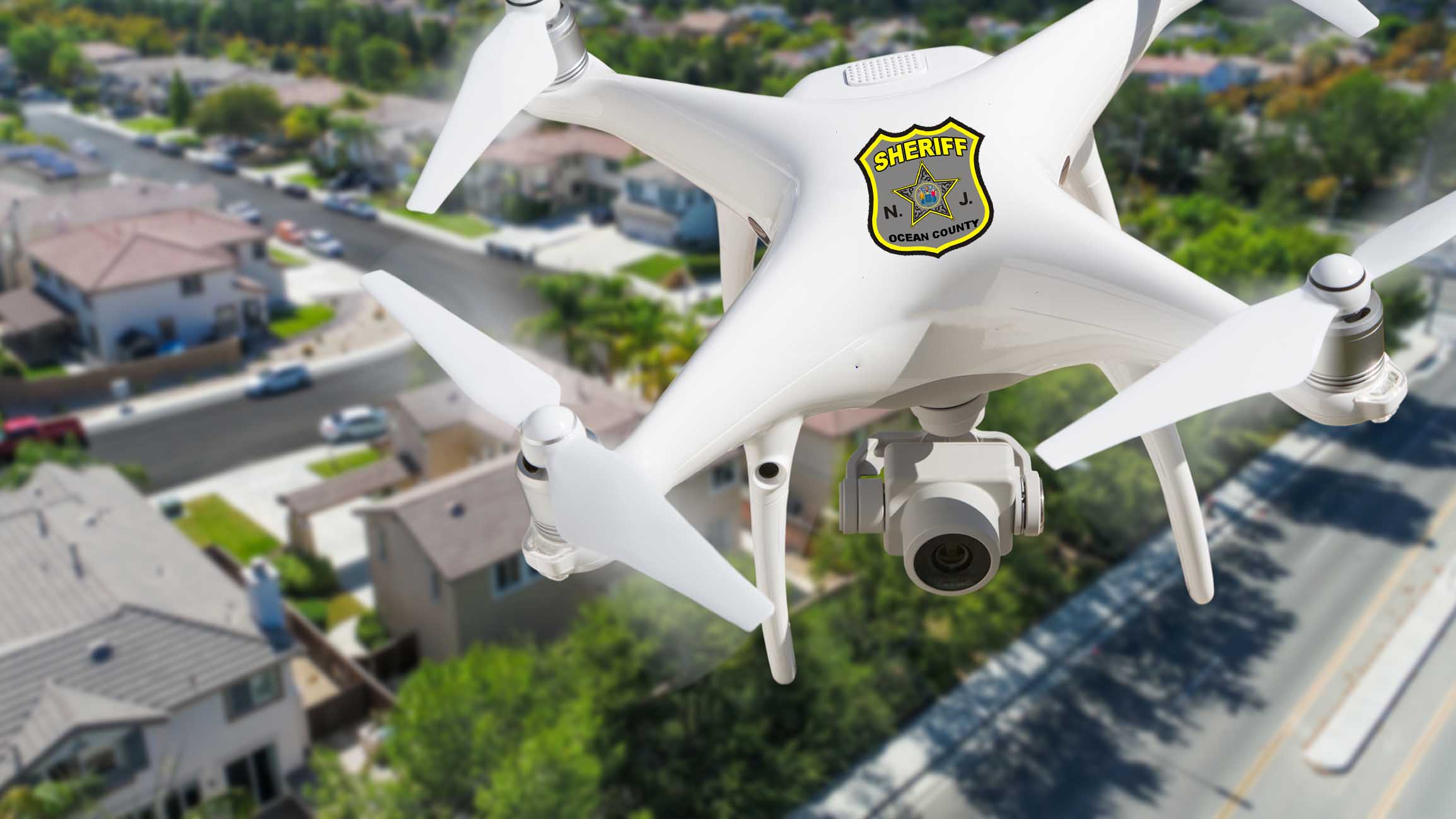TOMS RIVER, NJ – Since becoming Sheriff of Ocean County, former Toms River Police Chief Michael Mastronardy has vastly increased the use of technology within the county’s largest law enforcement agency.
One way Sheriff Mastronardy is keeping people safe is by keeping eyes in the sky, and eyes on the sky, and eyes on the ground.
Last night at a meeting in Jackson Township, Mastronardy boasted about the department’s fleet of ariel drones and video surveillance systems that rely on high-tech equipment that allows him to see everything that goes on in Ocean County, sometimes, before it even happens.
Mastronardy demonstrated how the department uses surveillance equipment, a fleet of drones, social media monitoring systems, and anti-drone technology to fight crime in Ocean County. He said his agency now also uses anti-drone technology.
“We have a system that allows us to take over other people’s drones and send them right back to them,” Mastronardy said about securing crime scenes and police operations. “We had a case where a guy had a drone come near where we were, and we sent it right back to him. He was confused. He thought his drone was broken. Our guys watched him with binoculars as his drone flew back to him.”
Mastronardy said the department now has two units capable of returning drones to their owners or even downing them if needed. He says drones flying over crime scenes puts officers in jeopardy.
“We don’t want anyone giving away our positions or letting the bad guys know where we are,” he said.
Mastronardy said his anti-drone technology is the only one employed in the United States by a non-federal agency east of the Mississippi River.
“We’re not really supposed to have them,” he said. “But now we have two.”
The Sheriff’s Department fleet of drones now has 16 surveillance drones, many of which are outfitted with high-resolution and thermal imaging cameras.
Unmanned aircraft equipped with these sensors have proven to be helpful in a variety of situations, including searching for a missing person in a wooded area or over water, fire ground applications, and event situational awareness.
Mastronardy said the anti-drone units are useful in keeping the public safe. He said the department uses the drones to keep ordinary citizens from flying their drones around non-police situations such as events with large crowds.
“We had a situation at the beach where somebody’s drone fell out of the sky and injured a woman,” Mastronardy said. “She needed several stitches. It’s not just about that; who knows what people can drop from these drones so that we can keep them away. We have one in the south and one in the north now.”
When asked today about the legality of a non-federal agency utilizing anti-drone technology, Mastronardy refused to answer questions. According to the FAA, it is illegal for any non-federal agency to operate anti-drone technology. Mastronardy admitted during his presentation that the department has not received any federal authorization to operate anti-drone technology.
In 2020, the Department of Justice issued an advisory to non-federal law enforcement agencies about the legalities and illegalities of using anti-drone technology at the local level.
The Advisory was issued at a time when the commercial demand for UAS detection and mitigation was high, but the authority to use those capabilities is far from clear.
“To date, Congress has given limited authority to only four federal Departments – Defense, Energy, Justice, and Homeland Security – to engage in UAS (Unmanned Aircraft Systems) detection and mitigation activities, notwithstanding certain otherwise potentially applicable federal criminal laws,” the DOJ said. “The Departments and Agencies issuing the Advisory do not have the authority to approve non-federal public and private use of UAS detection or mitigation capabilities, nor do they conduct legal reviews of commercially available products’ compliance with those laws.”
In addition to drones, Mastronardy routinely deploys “compliance control cameras” around the county. Many can be found in culturally sensitive areas, such as in neighborhoods with high Orthodox Jewish Populations, at busy intersections in places such as Seaside Heights, and for video surveillance of large gatherings and public events.
The mobile surveillance units are trailer mounted with four directional cameras on a retractable monopole.
Last year, the Sheriff’s Department entered into an agreement with CYTTA Corp to employ technology that allows the sheriff and his department to access video feeds from the surveillance trailers, surveillance drones, and other video sources such as traffic cameras, public security cameras from anywhere, even on his phone, while he’s sitting at home. That system allows the sheriff to assess real-time video streams during department operations.
Ocean County became the latest adopter of technology used by agencies like the FBI and Homeland Security called IGAN 2.0, Incent Global Area Network.
The county’s new IGAN 2.0 ICS integrates any available video and audio streams, drones, body cams, fixed cameras, cell phones, and other cameras in the department’s arsenal, enabling real-time situational awareness while providing relevant and detailed actionable intelligence to law enforcement on an ongoing basis.
“IGAN provides law enforcement officers with the data they need to make critical, on-scene decisions,” Mastronardy said. “It will become an indispensable technology that can protect and secure our communities. We look forward to implementing within our department and then connecting all public and private schools, and community organizations, further ensuring the safety and security of Ocean County.”
